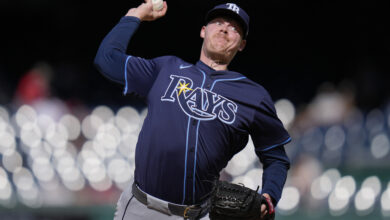
Cubs’ Collaborative Evaluation Process Clearly Displayed in Draft, Undrafted Free Agency
When the Cubs hired Dan Kantrovitz from the Oakland A’s to run their draft, there was some thought that he was taking a step back from assistant GM to VP of scouting. Even though he had pretty much done the same thing for the Cardinals going back as far as 2012, it wasn’t certain how he would impact the Cubs and what kind of leader he would be for their retooled scouting department.
He had remained mainly under the radar since being hired back in November, but Kantrovitz has made all the media rounds since the days leading up to the draft. He appeared on Mully & Haugh and Inside the Clubhouse on 670 The Score, joined Marquee Sports Network for a podcast, and talked to Patrick Mooney of the Athletic. It’s was a crash course in getting who Kantrovitz is and what he’s trying to do in his new role.
More than anything, the conversations and who the Cubs drafted and why reveal what they’re looking to do as an organization with their new VP in tow. First and foremost, it’s truly a collaborative effort. Rather than turning over total authority for the draft, the Cubs wanted someone who’d be able to come in and take stock of all the angles.
“I speak with [scouts] on a daily basis and probably have the most information,” he told Mooney, “So, I think Jed and Theo trust me to make decisions. And then there’s a lot of times where I lean on them to help me make decisions. At the end of the day, it’s all of us. I don’t think there was a decision that we made in the draft that I wasn’t speaking with Jed and Theo or R&D or player development or our scouts.”
Players revealed that Kantrovitz would include hitting director Justin Stone or pitching director Craig Breslow on pre-draft calls or in conversations with potential undrafted free agents. That not only allowed Kantrovitz to gather opinions from the Cubs’ development staff, but it also gave those directors a chance to better understand the players they’d have in the fold once baseball activities resume.
Rather than use the pandemic shutdown as an excuse, Kantrovitz saw it as a way to learn from other organizations, even those in other sports, how to find new ways to scout players. No longer able to see live game action in person, he actually turned to the NFL to learn how to get to know athletes remotely.
“One of the things that they do, they break down video, whether it’s game film or practice for film,” Kantrovitz explained to Mully & Haugh. “They asked players about different reads formations and I think you got to get a lot of insight into players in their thought process.”
Kantrovitz and his team then worked to customize each call to each individual player. The Cubs made custom videos and let players download the team’s player development app. More than just listening to what players said, the scouting boss tried to pick up on little personality traits and body language that couldn’t be gathered from a standard phone call.
https://twitter.com/MLBastian/status/1270888734414815234
Even if he hadn’t discussed it specifically, it was obvious from the Cubs’ five draft selections that they were looking for loud tools. Power, speed, and athleticism were the hallmarks of the draft and signaled a more aggressive approach than we’ve seen from the organization in the past. Kantrovitz told Marquee it was “an epic draft” for the Cubs, which might be a little hyperbolic given its abbreviated nature.
At the same time, it’s very possible that the pursuit of potential impact players with very obvious tools is something that can help the organization jump-start what has been a relatively stagnant development process. While there are some prospects working their way through the system, the Cubs have yet to find much success with pitchers or picks from beyond the first round.
Ultimately, Kantrovitz will be judged on his ability to find players who can get to the majors to help the Chicago Cubs. While we may not be able to judge his success in that area for years to come, we’ve got pretty clear blueprint for how he intends to go about his business. That should become even more evident in next year’s 20-round draft and as this year’s crop starts competing in the minors.
To echo Epstein’s words from a few years back, the last week has just been a cookie. Now we just have to wait on Kantrovitz to prepare a whole meal.

